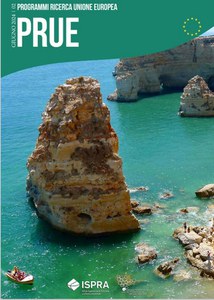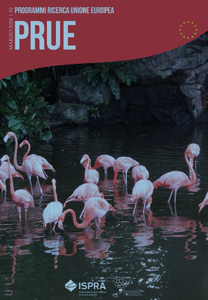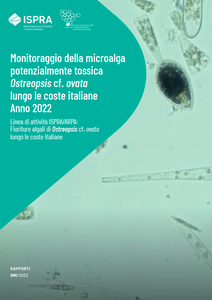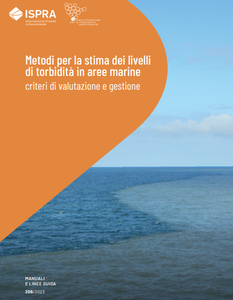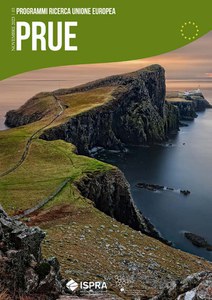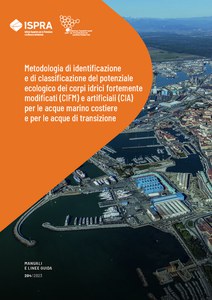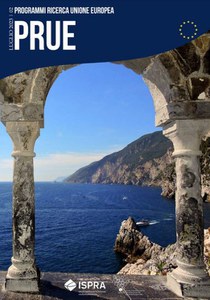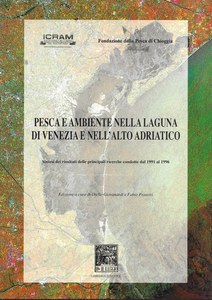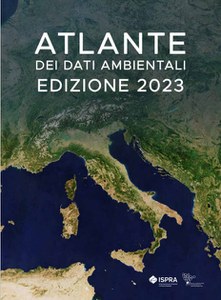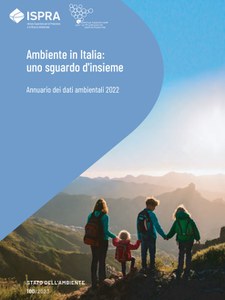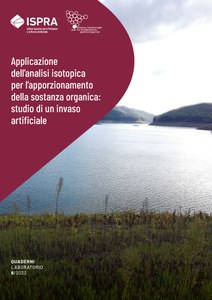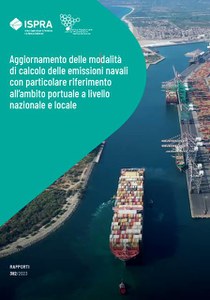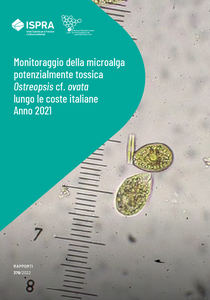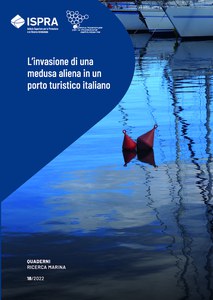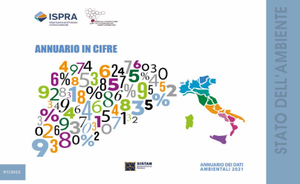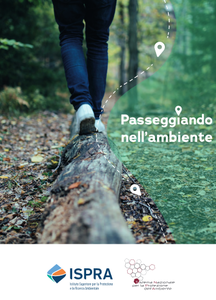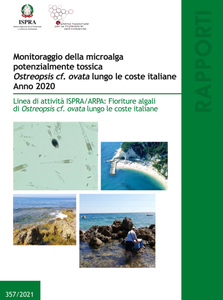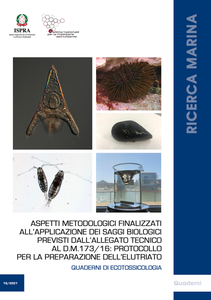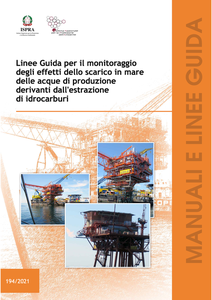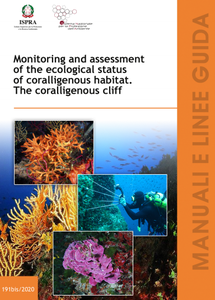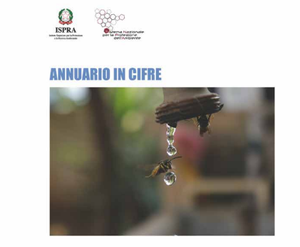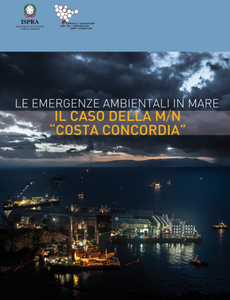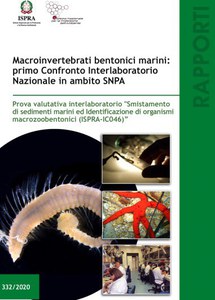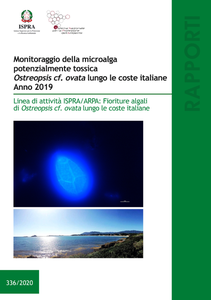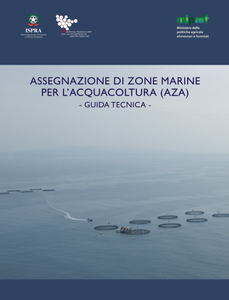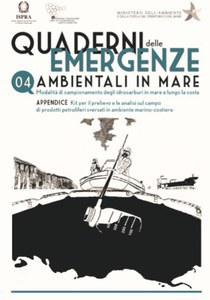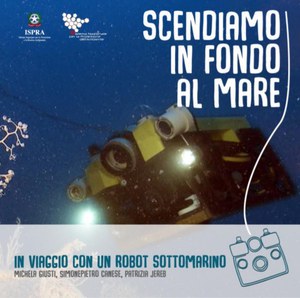Publications
Quaterly bulletin on a research funding
Blue Economy report 2024 The new edition of the EU Blue Economy Report is out, offering an in-depth analysis of European blue economy sectors and their performances based on the latest available data.
Quaterly bulletin on a research funding
Directive against greenwashing. Parliament has given its final green light to a directive that will improve product labelling and ban the use of misleading environmental claims.
Monitoring potentially toxic Ostreopsis cf. ovata along the italian coasts. Year 2022. Working Programme ISPRA/ARPA: Ostreopsis cf. ovata blooms along the italian coasts
Methods for estimating turbidity levels in marine areas evaluation and management criteria
The Guidelines are the result of a synergic action from Authors with different skills and from different Institutes. The document provides an overview of the existing tools to characterize the variability of turbidity in different marine areas (i.e. coastal, confined coastal and offshore).
Bulletin on research funding
Commission adopts measures to limit intentionally added microplastics
Methodology for the identification and classification of the ecological potential of heavily modified (HMWB) and artificial (AWB) water bodies for coastal and transitional waters
In the framework of the implementation of the Water Framework Directive (2000/60/EC), this Guideline was developed by the National Working Group for the identification and classification of the ecological potential of heavily modified water bodies (HMWB) and artificial water bodies (AWB) for coastal and transitional waters.
Guidelines for the assessment of the long term trend analysis of the priority substances that tend to accumulate in sediment and/or biota
On MASE’s request ISPRA has elaborated a guideline in order to define criteria to assess long term trend analysis of those priority substances that tend to accumulate in sediment and/or biota.
Bulletin on research funding
G7 Science and Technology for the ocean
Fishing and the environment in the Venice Lagoon and in the Upper Adriatic
Summary of the results of the main researches conducted from 1991 to 1996
Atlas of Environmental Data. 2023 edition
The Atlas of environmental data, a volume that ISPRA publishes for the first time, offers an overview of the main environmental data. It provides cartographic representations showing the spatial distribution of the main environmental information which, together with graphs, tables and texts, illustrate the state of the entire national territory.
Environment in Italy: an overview. Environmental Data Yearbook 2022
Environment in Italy: an overview. Environmental Data Yearbook 2022 is a statistical report produced by ISPRA with the aim of providing policy makers, public administrators, technicians and citizens with official information on the state of the environment in our country.
Application of isotopic analysis for the proportioning of organic matter: study of an artificial reservoir
With the study of the stable isotopes of carbon and nitrogen it is possible to quantify the contribution to the total organic substance deriving either from the natural transformation of the biotic component or from anthropic sources such as, for example, urban and/or industrial waste. Recent research has demonstrated the effectiveness of such investigations in the identification and evaluation of contributions to organic matter deriving from multiple sources, in fact the stable isotopes of carbon and nitrogen show an isotopic composition characteristic of the source from which they originate.
Update of the navigation emission estimates in ports both at national and local level
The report contains the results of a project aimed at collecting data on navigation traffic in a few Italian harbors. A model has been used to calculate emissions estimate. A huge amount of data is necessary to perform a precise evaluation of emissions from the shipping sector.
Monitoring potentially toxic Ostreopsis cf. ovata along the italian coasts. Year 2021. Working Programme ISPRA/ARPA: Ostreopsis cf. ovata blooms along the italian coasts
The presence of the potentially toxic dinoflagellate Ostreopsis ovata (Fukuyo) has been observed along the Italian coast since the ‘90s. From then, intense and recurrent blooms of this seaweed alga occurred in several locations of the Tyrrhenian Sea and Adriatic Sea.
The invasion of an alien jellyfish in an Italian touristic port
Alien species are animal and plant organisms introduced accidentally or intentionally by humans outside their origin area. Maritime traffic is one of the species’ pathways of introduction, therefore, studying the alien populations that invaded port environments can help to fill the knowledge gaps on their invasion routes and impacts on local biodiversity and ecosystems.
The Yearbook in figures
Environmental Data Yearbook 2021
Walking through the environment
Monitoring potentially toxic Ostreopsis cf. ovata along the italian coasts. Year 2020. Working Programme ISPRA/ARPA: Ostreopsis cf. ovata blooms along the italian coasts
Methodological aspects for the application of bioassays included in the technical annex to the Environment Ministry Decree 173/16: protocol for the preparation of elutriate.
This booklet describes the methodological protocol to be used in the preparation of elutriates for the execution of bioassays on coastal marine sediments to be managed. The main aim is to minimize possible interference related to the techniques and methodologies used in the various public and private laboratories, as well as the need to comply with adequate chemical-physical conditions of the matrix to be tested that are closer to the field of application, in particular for those chronic/long term bioassays referred as "third type" in the Technical Annex of the Environment Ministry Decree 173/2016.
Guidelines for Monitoring the environmental effects of the produced water discharge deriving from offshore hydrocarbons extraction"
Companies involved in offshore oil and gas production activities operating on the Italian continental shelf are required to carry out environmental monitoring in order to obtain information on the actual and potential environmental impacts of Produced Water (PW) discharged in the sea for the marine ecosystem. Such activities are regulated under D. Lgs. 152/2006 (art.104) and the guidelines are a result of an ISPRA advisory group appointed by the Environmental Ministry (now MITE).
Monitoring and assessment of the ecological status of coralligenous habitat. The coralligenous cliff (English version)
The Yearbook in figures
Environmental Data Yearbook 2020
Environmental emergencies at sea: the case of the M/N "Costa Concordia"
An environmental emergency at sea occurs when an event such a spill, accidental or deliberate, determines, in matrices such as biota, sediments, water and atmosphere, conditions that threaten the integrity of the marine ecosystems involved and require urgent response to be tackled.
Concordia. Photographic report from the removal of the wreck to the restoration of the damaged marine environments
The Costa Concordia accident was undoubtedly an important test for the Italy's ability to respond to a complex technical-engineering problem.
Marine benthic macroinvertebrates: first national interlaboratory comparison in the SNPA scope
The current legislation on the classification and assessment of the quality status of coastal marine environments (EU Water Framework Directive 2000/60 /EC) identifies the macrozoobenthic communities as indicator (Biological Quality Element) to be used for the classification of the ecological status of these environments.
Monitoring potentially toxic Ostreopsis cf. ovata along the Italian coasts. Year 2019
Working Programme ISPRA/ARPA: Ostreopsis cf. ovata blooms along the Italian coasts
Allocated Zones for Aquaculture (AZA).Technical Guide
Quad. V – Guidelines on the Shoreline Clean-up Assessment Technique (SCAT)
The booklets on environmental emergencies at sea
Quad. IV – Addendum - kit oil spill responders should have at hand while going on the coast and at sea
The booklets on environmental emergencies at sea
Let’s go down to the bottom of the sea – Travelling with a submarine robot
The book "Let's go down to the bottom of the sea - Travelling with a submarine robot ", addressed, above all (but not only), to children was inspired by the desire to tell them, in a simple and nice way, some aspects of the research activity at sea: this is how Pollux, a small underwater robot, was born. Together with his friends Astrea (the research vessel) and EM2040 (the echosounder), Pollux tells about some of the explorations carried out on the beautiful seabed of our "Blue Planet".

